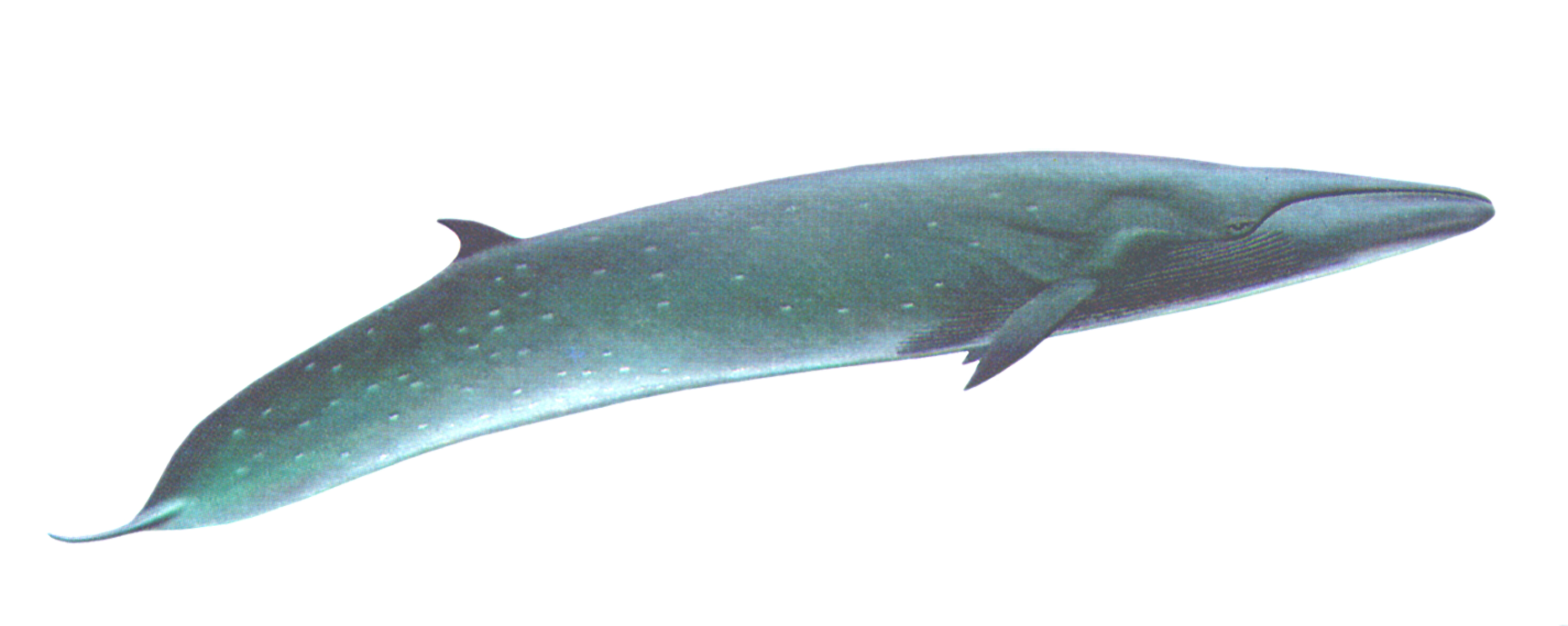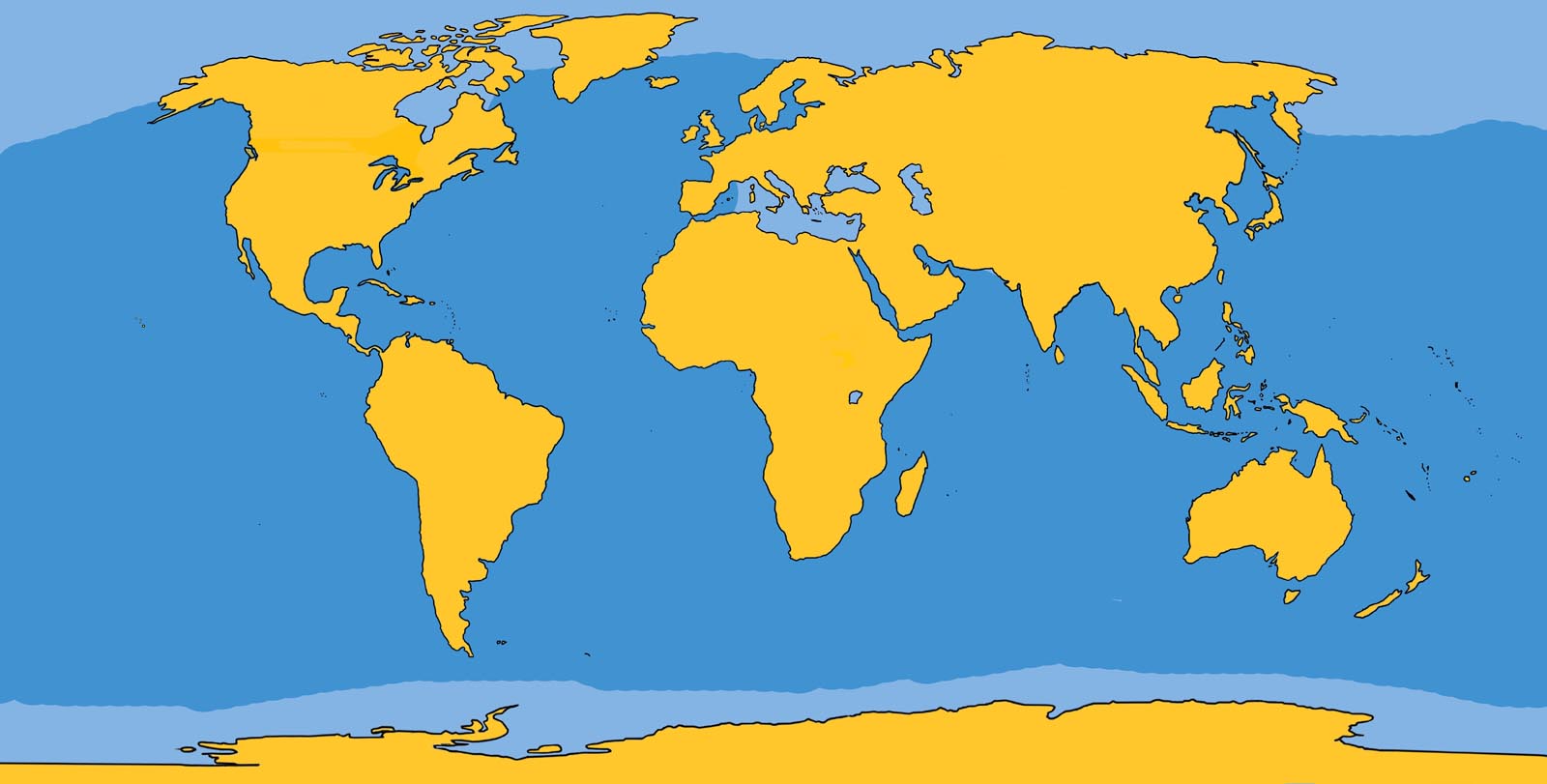 Family: Balaenopteridae
Family: Balaenopteridae
Genus: Balaenoptera
Species: B. borealis Lesson, 1828
Probably the fastest of all whales, the sei can reach speeds in excess of 24 mph (38 kph) which may assist them in capturing the small schooling fish on which they prefer to feed. Sei whales feed on euphausids and other crustaceans, which they catch while swimming on the surface, mouth open, skimming the water much as right whales do. Sei whales rise horizontally to the surface to breathe, exposing the dorsal fin and head simultaneously.
This whale derived its name from “seje”, a Norwegian term for pollack, a member of the codfish family, because the whales appeared off Norway simultaneously with schools of the fish.
Physical Description: One long ridge runs from the tip of the upper jaw to the blowholes. The tip of the rostrum is more rounded than that of the fin whale.
Color: Smooth dark gray on the dorsal and flank regions, and the posterior ventral region as well. Numerous white oval marks on the flanks and ventral surfaces caused by lamprey and cookie-cutter shark bites. The body seems to have a galvanized appearance. The chin, throat, and belly are white as far back as at least the end of the throat grooves. Small white dorsal dots may be present on the dark lower ventral region. The flippers and flukes are dark gray.
Fins and Flukes: The falcate dorsal fin is very tall (10 to 24 in, or 25 to 61 cm) and situated farther back than that of the fin whale. The flippers are large, thin, rounded at the trailing edge, and pointed at the tips. There is a definite median notch.
Length and Weight: Males may exceed 60 ft (18 m) in length and weigh 24 tons (22,000 kg); females may exceed 65 ft (20 m) and 26 tons (24,000 kg).
Throat Grooves: Sei whales possess 38 to 56 throat grooves spaced about 3 in (7.5 cm) apart, extending down t he throat to between the flippers.
Baleen Plates: There are 320 to 380 baleen plates on each side of the upper jaw with fine white bristles. The plates measure 31 in (78.7 cm) in length.
Feeding: Sei whales prefer euphausids and other small crustaceans, but also feed on capelin, pollack, anchovies, herring, cod, and sardines. No bottom-dwelling organisms are taken.
Breathing and Diving: They blow 2 to 3 times at approximately 17-second intervals before a 5 to 10 minute dive. They rise to the surface horizontally and do not expose t heir flukes prior to their long dive. The blow resembles and inverted cone, rarely taller than 15 ft (4.5 m).
Mating and Breeding: A 15 to 16 ft (4.5 to 5 m), 1 ton (900kg) calf is born after an 11 month gestation period. Sexual maturity is reached at 8 years when males are 43 ft (13 m) and females are 45 ft (13.7 m) long. Calving takes place at 2-year intervals.
Herding: They are usually observed alone or in pairs; groups of up to 50 have been observed where food is plentiful.
Distribution: They are found in all oceans but seem to avoid ice packs.
Migration: They are known to follow the movements of food fish, making migration routes unpredictable.
Natural History Notes: Sei whales are thought to live to at least 70 years of age.
SEI WHALE DISTRIBUTION








